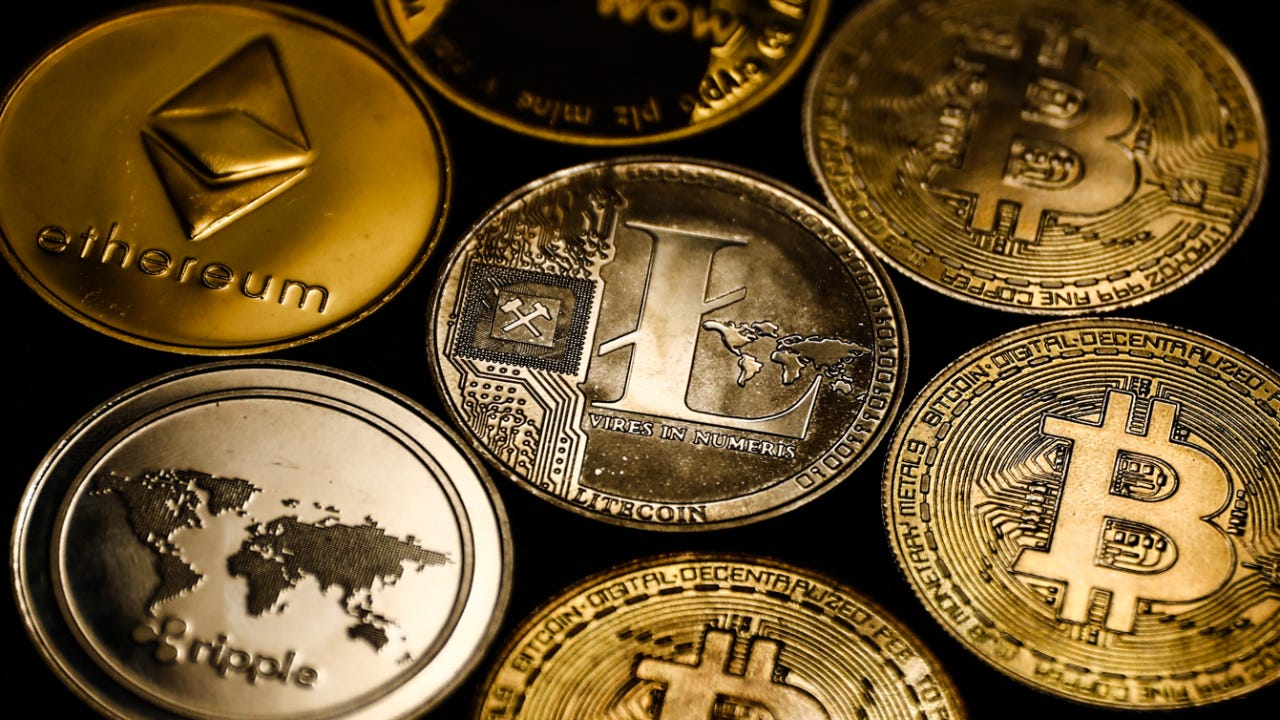As the cryptocurrency landscape evolves, understanding Altcoin Trends becomes crucial for investors and enthusiasts alike. The year 2024 promises significant advancements, driven by technological innovations and regulatory changes. Diverse factors, such as enhanced blockchain solutions and global regulatory frameworks, are set to shape the future of altcoin markets. To navigate these complex changes, it is vital to grasp the underlying forces at play. By analyzing key drivers and adopting strategic investment approaches, stakeholders can better position themselves to capitalize on emerging altcoin opportunities in the upcoming year.
Key Factors Driving Altcoin Adoption in 2024
Several key factors will drive altcoin adoption in 2024. Understanding these influences is crucial for predicting Altcoin Trends and making informed investment decisions.
1. Technological Advancements:
- Improved Blockchain Technology: Upgrades to blockchain technology, including faster transaction speeds and enhanced security protocols, boost altcoin competitiveness.
- Interoperability Solutions: Developments in cross-chain compatibility make it easier for different blockchains to communicate, fostering greater altcoin utility.
2. Market Sentiment:
- Investor Awareness: Growing public awareness and education about altcoins influence market trends. As more people understand the potential of altcoins, adoption rates rise.
- Media Coverage: Enhanced media attention can elevate public interest and drive adoption rates significantly.
3. Economic Factors:
- Macro-Economic Conditions: Inflation, currency devaluation, and economic instability lead investors to seek alternative assets like altcoins.
- Institutional Investment: Increasing institutional funding and corporate adoption solidify altcoins as viable investment options.
4. Regulatory Environment:
- Regulatory Clarity: Governments providing clear regulations around altcoins can either accelerate or hinder adoption. Favorable policies encourage growth.
- Compliance Measures: Implementation of KYC (Know Your Customer) and AML (Anti-Money Laundering) safeguards increase trust in altcoin markets.
In conclusion, these factors collectively influence Altcoin Trends, providing a robust framework for understanding why and how altcoin adoption will progress in 2024.

Technological Innovations Shaping Future Altcoin Markets
As we look ahead to 2024, understanding the Altcoin Trends necessitates a deep dive into emerging technological innovations. These advancements drive value and adoption in altcoin markets, setting the stage for transformative changes.
The most notable technological innovations include:
Smart Contracts: Smart contracts are evolving, offering more complex and reliable functionalities. This innovation strengthens trust and automates processes, which is pivotal for decentralized applications.
Scalability Solutions: Altcoins are increasingly adopting scalability solutions like sharding and layer-2 protocols. These innovations address the transaction speed and fee issues that plague many blockchain networks.
Interoperability Protocols: Enhanced interoperability between different blockchains allows seamless asset transfers. This fosters a more connected and efficient ecosystem.
To illustrate the impact:
| Innovation | Impact |
|---|---|
| Smart Contracts | Enhance automation and trust |
| Scalability Solutions | Improve speed and reduce transaction fees |
| Interoperability Protocols | Facilitate cross-blockchain operations |
These Altcoin Trends highlight technological advancements as fundamental to shaping the future altcoin markets. As these innovations mature, they will likely drive broader adoption and create new opportunities for investors and developers alike.
Regulatory Developments and Their Impact on Altcoin Trends
Regulatory developments play a crucial role in shaping Altcoin Trends. As governments and financial authorities worldwide grapple with the rapidly evolving landscape of digital currencies, new regulations are emerging that directly impact the trajectory of altcoins. Notably, a few key areas of regulation are worth highlighting:
1. Legal Recognition and Frameworks:
Countries are increasingly recognizing cryptocurrencies as legal assets, providing clearer guidelines and enhancing investor confidence.
2. Taxation Policies:
Governments are also developing comprehensive tax regulations for altcoin transactions. This introduces transparency but requires investors to be meticulous with their records.
3. Anti-Money Laundering (AML) and Know Your Customer (KYC):
Stringent AML and KYC regulations ensure that altcoin platforms operate responsibly, affecting the way altcoin exchanges and wallets function.
Regulatory Comparison:
| Region | Legal Status | Taxation Approach | AML/KYC Advisories |
|---|---|---|---|
| United States | Recognized as assets | Capital Gains Tax | Compulsory for exchanges |
| European Union | Varies by country | VAT applicable | High compliance requirements |
| Japan | Legal tender status | Income Tax on profits | Rigorous regulations |
Thus, understanding these factors becomes imperative for anyone invested in altcoins. Effective regulatory frameworks can lead to sustainable and secure growth, positively influencing Altcoin Trends in the years to come.
Investment Strategies for Navigating the Altcoin Landscape
Investing in altcoins remains a dynamic and complex endeavor. As the market for altcoins matures, investors must develop robust strategies. Here are key strategies to navigate the altcoin trends effectively:
Diversification: Spread your investment across various altcoins to mitigate risks. Allocating funds to multiple coins ensures that the decline of one does not significantly impact your portfolio.
Research: Prior to investing, conduct thorough research. Assess the technology, team, and market potential of each altcoin. Staying updated with the latest news and technological advancements bridges knowledge gaps.
Risk Management: Set clear entry and exit points for your investments. Use stop-loss orders to minimize potential losses. This disciplined approach maintains emotional neutrality.
Long-Term Holding: Identify promising altcoins with robust fundamentals. Holding proven altcoins in the long term can yield substantial returns, especially if they gain widespread adoption.
| Investment Strategy | Description |
|---|---|
| Diversification | Spread investment across multiple altcoins to reduce risk. |
| Research | Thoroughly assess the technology, team, and market potential of each altcoin. |
| Risk Management | Set entry and exit points, and use stop-loss orders. |
| Long-Term Holding | Invest in highly credible altcoins for long-term gains. |
By employing these strategies, investors can better manage and capitalize on altcoin trends, ensuring a more secure and profitable investment experience.

Frequently Asked Questions
What are altcoins and why are they important?
Altcoins (alternative coins) refer to any cryptocurrency that is not Bitcoin. They are crucial because they offer a wide range of functionalities and innovations that Bitcoin does not. For example, some altcoins focus on enhanced privacy features, while others are geared towards improving transaction speeds or enabling smart contracts and decentralized applications. By diversifying into different aspects of blockchain technology, altcoins contribute to the growth and evolution of the cryptocurrency ecosystem.
What trends can we expect for altcoins in 2024?
In 2024, we can anticipate several key trends in the altcoin market. First, there is likely to be increased regulatory scrutiny, which will require projects to comply with more stringent legal frameworks. Second, advancements in blockchain technology, such as improvements in scalability and interoperability, may spur the growth and adoption of altcoins. Finally, with the rise of decentralized finance (DeFi) and non-fungible tokens (NFTs), specific altcoins catering to these sectors could see significant gains in popularity and value.
How can one assess the potential of an altcoin?
Assessing the potential of an altcoin involves several factors. First, it is important to evaluate the underlying technology and its use case. Does the altcoin solve a real-world problem or improve upon existing solutions? Second, scrutinize the team behind the project; a strong team with a proven track record is often a good indicator of potential success. Third, review the altcoin’s roadmap and community support. Finally, examining market metrics such as trading volume, liquidity, and market capitalization can provide additional insights into the altcoin’s viability.
Is it safe to invest in altcoins?
Investing in altcoins carries a high level of risk and requires thorough due diligence. Unlike traditional investments, the cryptocurrency market is highly volatile and can experience dramatic fluctuations in short periods. It is crucial to research extensively, remain aware of regulatory developments, and only invest what you can afford to lose. Diversification within the altcoin space can also help mitigate risks. Additionally, using secure wallets and exchanges to store and trade altcoins is advisable to protect against hacks and other security threats.











